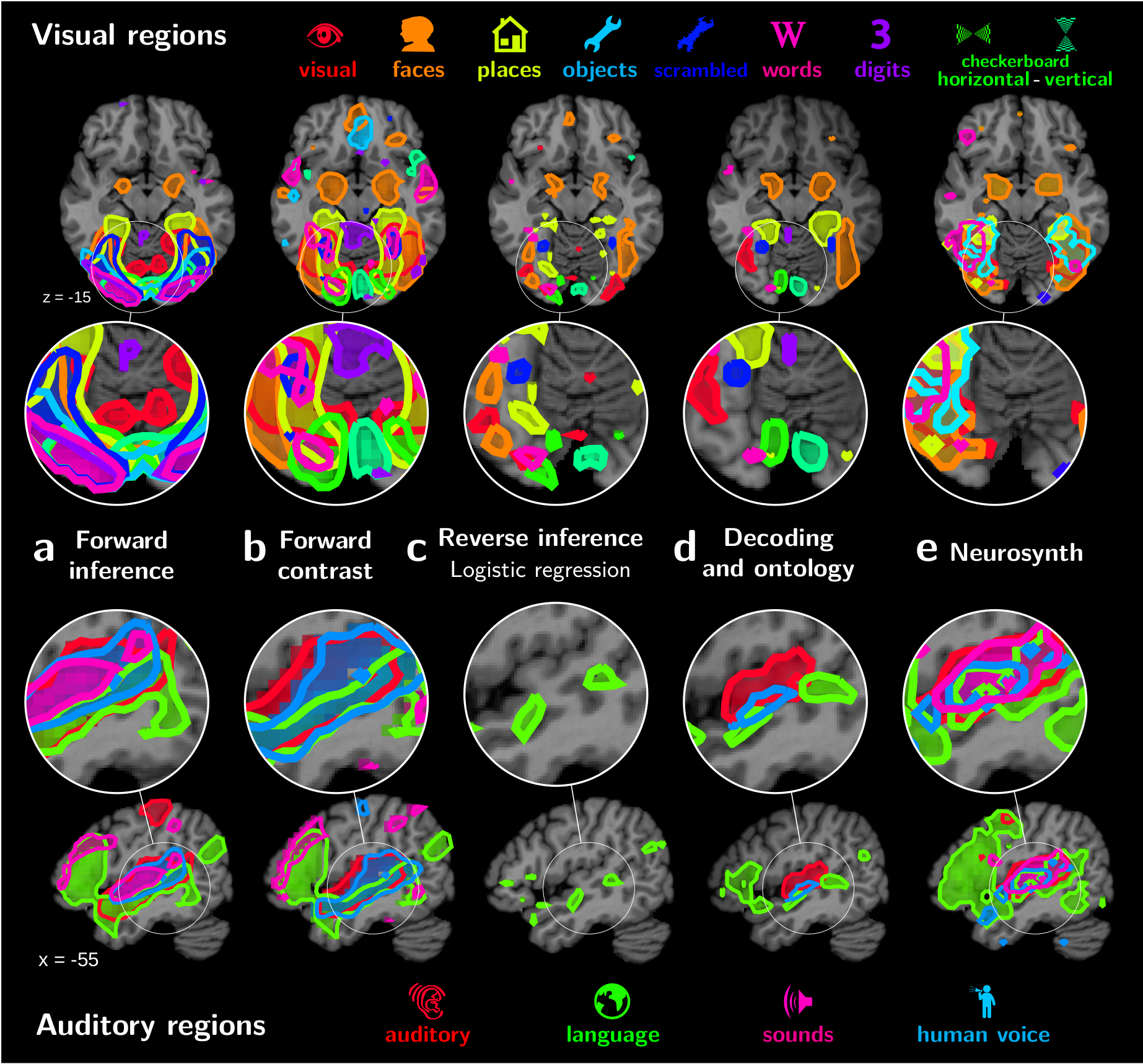Section: New Results
Atlases of cognition with large-scale brain mapping
To map the neural substrate of mental function, cognitive neuroimaging relies on controlled psychological manipulations that engage brain systems associated with specific cognitive processes. In order to build comprehensive atlases of cognitive function in the brain, it must assemble maps for many different cognitive processes, which often evoke overlapping patterns of activation. Such data aggregation faces contrasting goals: on the one hand finding correspondences across vastly different cognitive experiments, while on the other hand precisely describing the function of any given brain region. Here we introduce a new analysis framework that tackles these difficulties and thereby enables the generation of brain atlases for cognitive function. The approach leverages ontologies of cognitive concepts and multi-label brain decoding to map the neural substrate of these concepts. We demonstrate the approach by building an atlas of functional brain organization based on 30 diverse functional neuroimaging studies, totaling 196 different experimental conditions. Unlike conventional brain mapping, this functional atlas supports robust reverse inference: predicting the mental processes from brain activity in the regions delineated by the atlas. To establish that this reverse inference is indeed governed by the corresponding concepts, and not idiosyncrasies of experimental designs, we show that it can accurately decode the cognitive concepts recruited in new tasks. These results demonstrate that aggregating independent task-fMRI studies can provide a more precise global atlas of selective associations between brain and cognition.
|
More information can be found in [28].



